Higher classification Graphium | Family Papilionidae Scientific name Graphium doson Rank Species | |
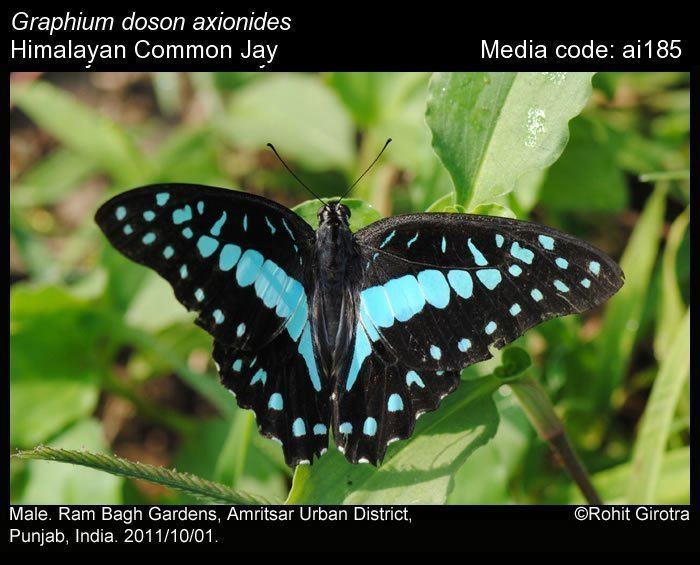 | ||
Similar Butterfly, Graphium sarpedon, Swallowtail butterfly, Graphium, Papilio helenus | ||
Graphium doson felder felder 1864 common jay
Graphium doson, the common jay, is a black, tropical papilionid (swallowtail) butterfly with pale blue semi-transparent central wing bands that are formed by large spots. There is a marginal series of smaller spots. The underside of wings is brown with markings similar to upperside but whitish in colour. The sexes look alike.
Contents
- Graphium doson felder felder 1864 common jay
- Graphium doson postianus butterfly sucking water from the sand land of riverbank
- Range
- Habitat
- Behaviour
- Subspecies
- Eggs
- Larva
- Pupa
- Food plants
- References
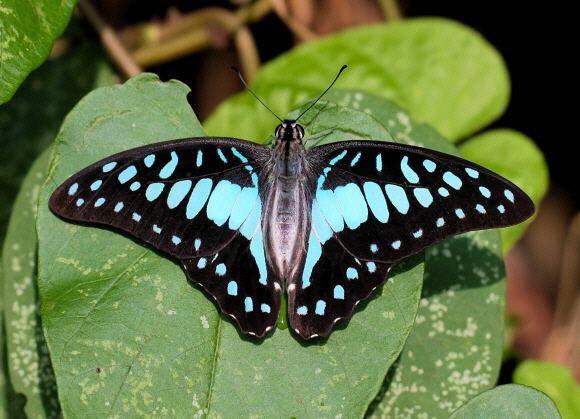
Graphium doson postianus butterfly sucking water from the sand land of riverbank
Range
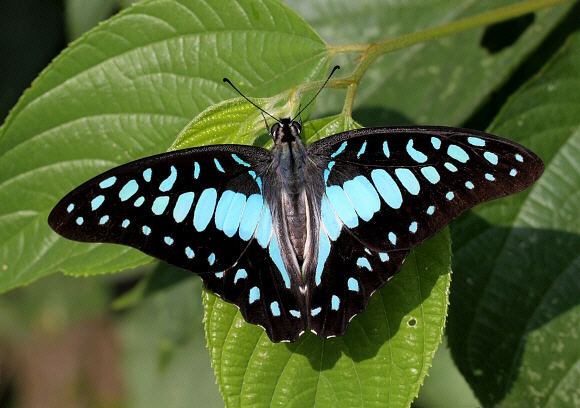
It is widespread and common throughout Southeast Asia, including lower elevations in Sri Lanka and southern India, Eastern Ghats, Satpuras, Bengal, Assam and Bangladesh, and the Himalayan foothills. The species is however scarce in southern Honshū, Japan.
Habitat
It is common in thick, riparian, moist, deciduous, semi-evergreen and evergreen forests.
Behaviour
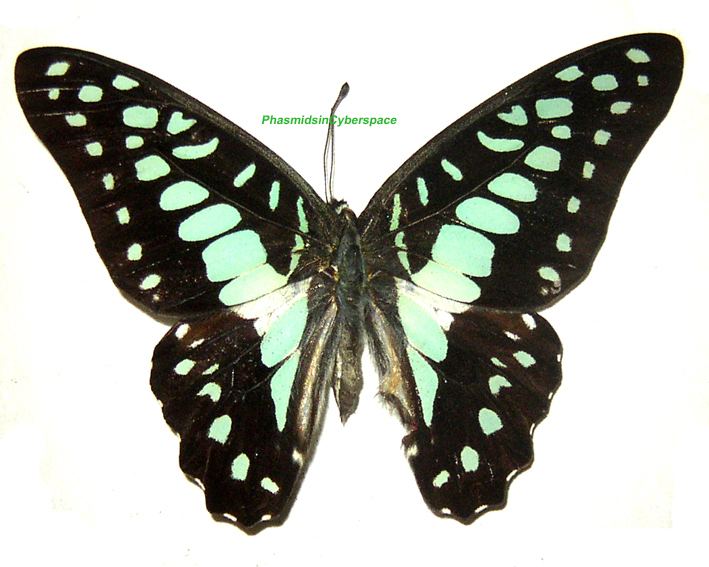
The common jay is active throughout the day and constantly on the move; it rarely settles down. Its flight is swift and straight. When feeding from flowers, it never settles down and keeps its wings vibrating. The males are seen mud-puddling, often in tight groups.
Subspecies
Eggs
The spherical and pale yellow eggs are laid singly on the underside of leaves.
Larva
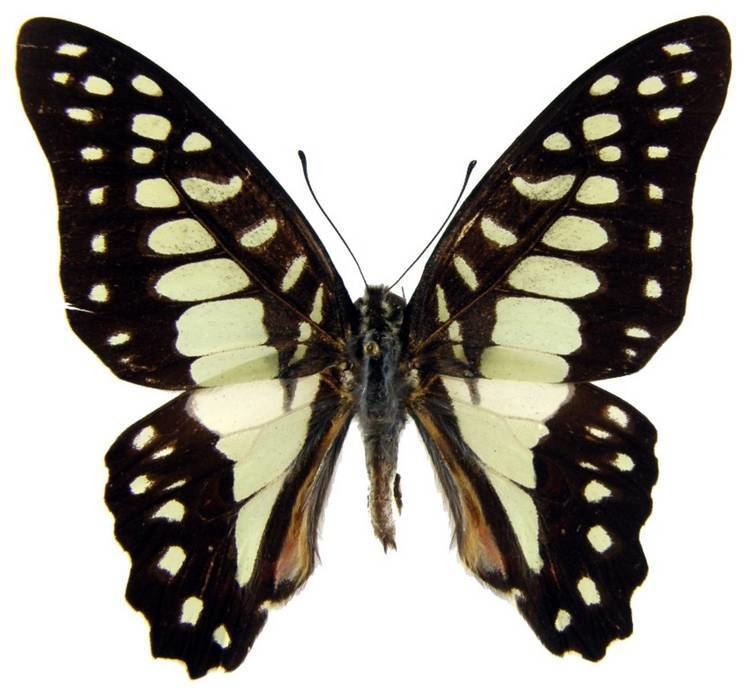
The caterpillar is somewhat spindle shaped. The grown caterpillars have two forms, dark brown or grassy green. There are spines on the fourth segment which are short, conical and blue centred surrounded by lemon yellow and then black rings. The osmeterium is pale bluish green. It is extruded only reluctantly.
Pupa
The pupa is pale green with a dark purplish median line from the head to the thoracic horn and a yellow line from the tip of the horn to the cremaster.
Food plants
The caterpillars feed on plants of the families Annonaceae, Lauraceae and Magnoliaceae such as Annona lawii, Cinnamomum macrocarpum, Magnolia grandiflora, Michelia champaca, Milliusa tomentosum and Polyalthia longifolia.
